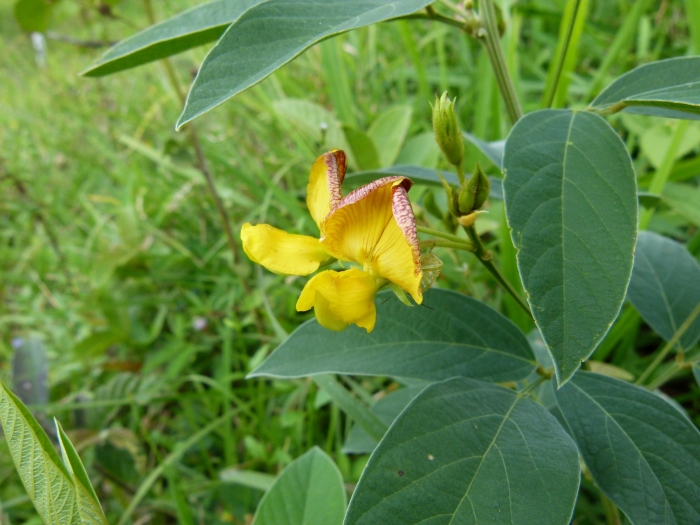Pigeon Pea
(Cajanus cajan)
Pigeon Pea (Cajanus cajan)
/
/

botanygirl
CC BY 4.0




































































Estimated Native Range
Summary
Pigeon Pea is valued for its drought tolerance and ability to fix nitrogen, improving soil fertility. It is commonly used in agroforestry systems, intercropped with cereals, and as a food source. The seeds are high in protein and an important ingredient in various cuisines. In cultivation, it requires full sun and can tolerate a range of water conditions and soil types, including those with poor fertility. While it is a key crop for subsistence farmers, it can become invasive outside its native range, so caution is advised.CC BY-SA 4.0
Plant Description
- Plant Type: Shrub
- Height: 7-10 feet
- Width: 7-12 feet
- Growth Rate: Moderate
- Flower Color: Yellow
- Flowering Season: Spring, Winter
- Leaf Retention: Evergreen
Growth Requirements
- Sun: Full Sun
- Water: Low
- Drainage: Medium
Common Uses
Bank Stabilization, Bird Garden, Drought Tolerant, Edible*Disclaimer: Easyscape's listed plant edibility is for informational use. Always verify the safety and proper identification of any plant before consumption., Low Maintenance
Natural Habitat
Tropical woodlands, savannahs, and scrublands of the Indian subcontinent
Other Names
Common Names: Pigeon-Pea , Pigeonpea , Red Gram , Yellow Dhal , Congo-Pea , Straucherbse , Gandul , Cachito , Ambrévade , Pois D’Angole
Scientific Names: Cajanus cajan , Cajanus indicus , Cajanus flavus , Cajanus bicolor , Cytisus cajan , Cajanus pseudocajan , Cytisus mollis , Cajanus indicus var. bicolor , Cajanus indicus var. maculatus , Cajanus luteus
GBIF Accepted Name: Cajanus cajan (L.) Huth